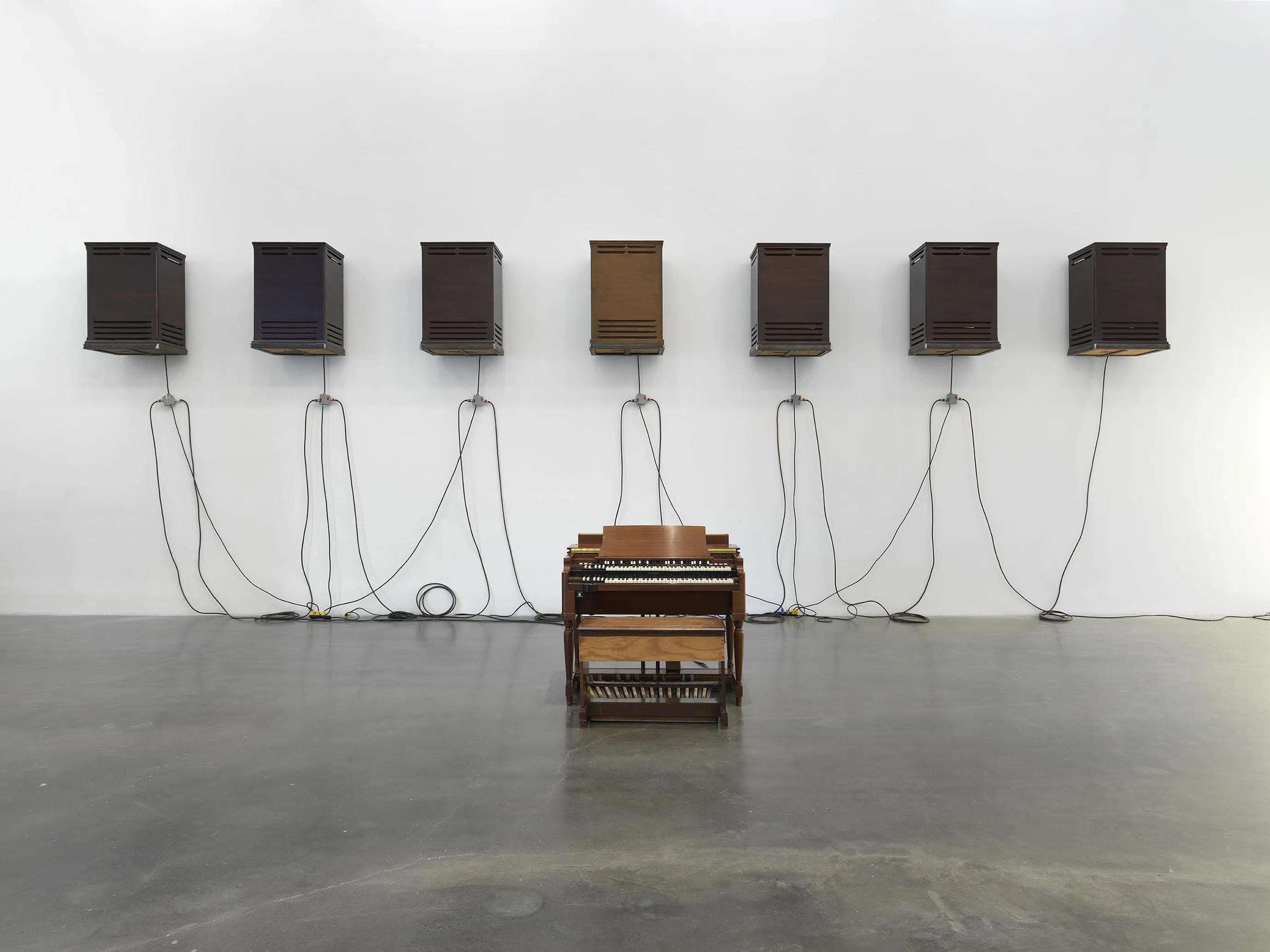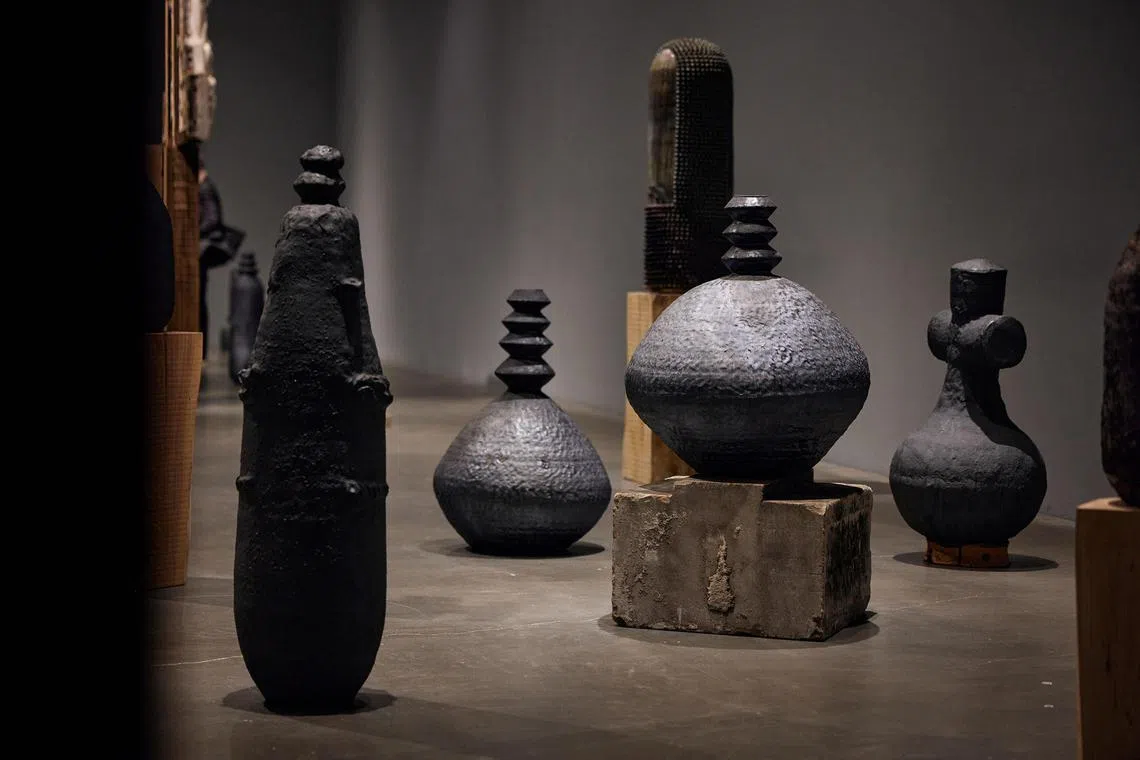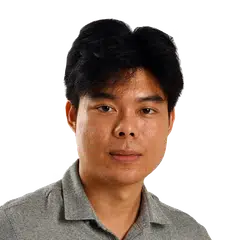Singapore Art Week 2025: Theaster Gates says beauty is a choice to give care
Sign up now: Get ST's newsletters delivered to your inbox

American installation artist Theaster Gates will be delivering a keynote lecture at Singapore Art Week 2025.
PHOTO: COURTESY OF THEASTER GATES STUDIO
Follow topic:
SINGAPORE – Midway through the 40-minute video call, American artist and professor Theaster Gates slows his voice and speaks in meditative tones: “You can now hear yourself walking. The tiles are making an impression on your feet. You smell things. You hear things faintly, which requires that you listen more.”
His intonations would fit on mindfulness channels, but he is describing the experience of one work at his 2024 solo exhibition at Tokyo’s Mori Art Museum.
His sculptural installation A Heavenly Chord comprises a Hammond B-3 Organ – a staple in black churches – and seven Leslie speakers that stream gospel soul chants performed by Gates and collaborators The Black Monks.
It speaks to one of Gates’ biggest obsessions – a modern spirituality infused by but also divorced from traditional religion. This is underpinned by a belief in miracles, stemming from an unexpected source.

A Heavenly Chord by Theaster Gates.
PHOTO: COURTESY OF NEW MUSEUM AND THEASTER GATES STUDIO
“For me, spirituality is practical. With very little resources, my mum raised nine children and our neighbour’s children, conjuring up things like chicken to eat and payment for bills.”
This first realisation led to him being open to “the pulpit, the shrine, the altar, Buddhist orders, the rector, the nunnery”.
“I imagine the white cube gallery as a sacred and holy space. When art is great, it moves things out of the way so that you can be present with yourself.”
The 51-year-old installation artist is the biggest contemporary name at the upcoming Singapore Art Week (SAW), delivering a keynote lecture at the SAW forum organised by the National Arts Council, National Gallery Singapore and Singapore Art Museum on Jan 15, themed Art Publics.
The art activist has made his name proving that art can improve whole communities. In 2015, he bought an abandoned bank building near his new home in the south side of Chicago and turned it into an arts hub. The Stony Island Arts Bank rejuvenated a primarily black neighbourhood.
“I remember thinking it would be a shame if I didn’t use my knowledge and my relationships and the resources that I could gather,” Gates, who is trained in urban planning, recalls. “It was in a bad state, and it seemed like a demonstration of the condition of black space.”
He imagined the building as a piece of land art, a conceptual view not shared by other stakeholders. Yet he still managed to marshal their support.
“They thought it was an economic development agent. They thought it was artist arrogance. But that doesn’t matter. In the same way that you make a painting, you can’t determine how people are going to respond to it.”
Gates speaks about art as duty, whether spiritual, political or familial. His concerns, such as homelessness, poverty and racism, are universal ones that he then locates to where he lives, motivated by the central question: Could beauty exist anywhere?
“We imagine beauty in such a limited way today that we often overlook and under-invest in the beauty that’s around us,” he says, adding what feels like his personal ethos: “It’s not about money. It’s the choice to give care, to use one’s philosophies, skills and hand ability to solve a problem.”
This expansive attitude is also manifested in his use of industrial materials like tar and wood in his paintings, a legacy of his father, who was a roofer.
Gates is also well known for his use of clay, moulding anthropomorphic vessels that are atavistic and a tribute to the time he spent in Japan perfecting pottery.

Theaster Gates is also well known for his use of clay.
PHOTO: COURTESY OF THEASTER GATES STUDIO
From the year spent studying ceramics in Tokoname, he evolved his Afro-Mingei ideology, a hybrid aesthetic combining black and Japanese folk craft philosophies.
He describes Japan as “a place I can rest, where I don’t feel judged, a place where I can continue to hone my knowledge”, and the most concrete proof that the world is a “beautifully complex” place.
“People say: ‘There’s nothing interesting in my culture.’ But I’m not interested in that. I’m an interesting person because of my aggregated self. I learnt a skill there and I’m using it to talk about the things that are important to me.”
It would be a shame if art is largely shepherded by commercial demands, ushered by art fairs and auction houses like Sotheby’s and Christie’s.
“Artists have access to a way of thinking that is not just about how much money we can make or how many of these can we sell. To be able to fight, to argue, to protest, to contest while they are developing their paintings or sculptures. Having a political position or a social position is as important as their artistic one.”
Book It/ Singapore Art Week Forum
Where: National Gallery Singapore, 1 St Andrew’s Road str.sg/9d2J
When: Jan 15, 9.30am to 5.30pm
Admission: $100
Info:
Clement Yong is a correspondent on the arts beat at The Straits Times, covering books, theatre and the visual arts.


